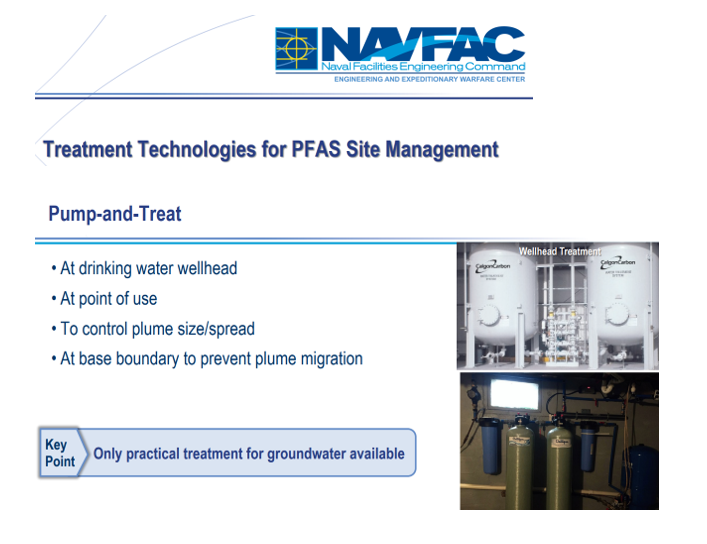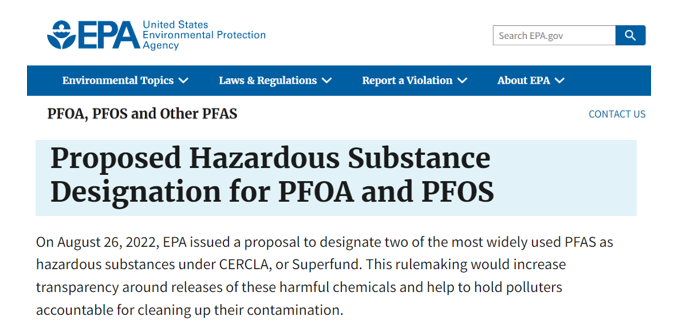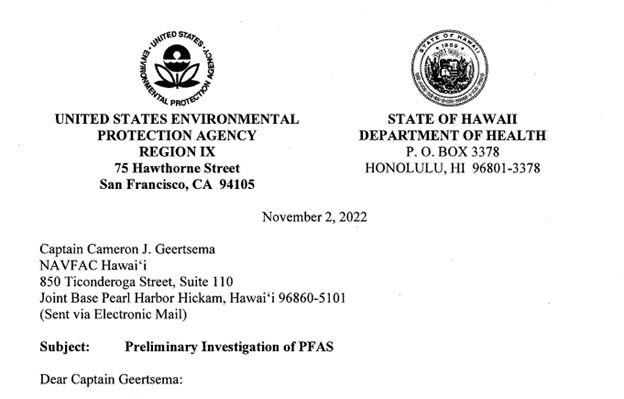Explaining the Red Hill Disaster
A guide to analyzing the December 8 response letter from EPA/ DOH to Honolulu Board of Water Supply's Ernie Lau
By Pat Elder
December 14, 2022
The red dot shows the location of the door to the entrance of the tunnel at Red Hill
in which the toxic leak started. Red Hill is located on Icarus Way.
Icarus was the son of Daedelus in the ancient Greek myth. Daedalus managed to create gigantic wings, using branches of a willow tree, and connected them to himself and his son with wax. He learned to fly and he taught Icarus how to fly, but told Icarus to keep away from the sun because the heat would make the wax melt, destroying the wings. The flight of Daedalus and Icarus allowed man to challenge the laws of nature. Icarus was immature and overly enthusiastic. He got excited by the thrill of flying and flew so close to the sun that his wings melted off and he plunged to his death.
Mankind’s sometimes irrational approach to technology sometimes outstrips our ability to control it. Storing 100 million gallons of fuel 100 feet above Oahu’s aquifer is a case in point, like placing two massive AFFF storage tanks containing a total of 2,900 gallons above all that fuel.
It is remarkable to consider that German chemists split the atom in 1938, just a few months after DuPont chemists in New Jersey discovered PFAS chemicals. Both have escaped rational controls and present existential threats to humanity.
December 8 response letter from EPA/DOH to Lau.
See this December 8, 2022 letter and attachments from the EPA and Hawaii’s Department of Health (DOH) to Ernest Y.W. Lau, Manager and Chief Engineer with the Board of Water Supply of the city and county of Honolulu. There’s a steep learning curve to all of this. We must learn it to protect our lives and land.
Lau’s letter asks that EPA and DOH:
1) Require the Navy to immediately begin weekly testing of all Navy monitoring wells and the Red Hill Shaft for per- and polyfluoroalkyl substances (PFAS);
2) Require the Navy to disclose all past AFFF uses and releases; and
3) Require the Navy to provide copies of PFAS testing results.
Honolulu is fortunate to have Ernie Lau.
These are excellent requests, but Hawaii state and municipal officials, along with selected academics, should be allowed to perform or monitor the testing. This is a theme being played out at overseas Naval facilities while the locals are always denied access. Hawaiians have a lot to learn from the Japanese in this regard. Independent testing is verifiable. We cannot trust the Navy.
From the EPA/DOH Letter - “We expect the Navy to conduct weekly sampling of ten wells –nine wells closest to the November 29, 2022 spill and the Red Hill Shaft. The Navy began collecting samples the week of December 5, 2022, and the contracted mainland laboratory will analyze the samples with a rapid turnaround time.”
What is the name of the testing firm and how were they selected?
“After receipt and evaluation of results from the ten wells, EPA and DOH will determine whether additional wells should be sampled.”
What are the parameters for making such a decision?
“EPA and DOH will encourage the Navy to release to the public the PFAS sampling data promptly after results are available.”
Just encourage? Who’s running the show here? Who, exactly is in charge – the civilians or the military? We’ve been hearing a lot about coups in this country lately. Have we had one and we just haven’t noticed?
More from EPA/DOH - “We will also encourage the Navy to release to the public the documents, including AFFF safety data sheets and an inventory of any AFFF remaining at the Red Hill Bulk Fuel Storage Facility. “
We still don’t know the exact type of AFFF used at Red Hill because the Navy hasn’t told us. If they identify the manufacturer, they likely won’t divulge the exact chemical composition of the foam. Instead, they’ll say it is “proprietary information.” The chemicals wind up in our food and in our blood. They cause cancer and immeasurable human suffering. This proprietary information is invaluable in the case of litigation, especially now that the Academies of Sciences have offered guidance to clinicians regarding seven PFAS compounds in our blood: PFOS, PFOA, MeFOSAA, PFHxS, PFDA, PFUnDA, and PFNA. People with blood levels above 2 parts per billion for a combination of these seven compounds are advised to undergo additional testing and/or treatment. See this explanation of blood results.
What’s in the foam, what’s in your blood, and how’s your health? If you’re sick, can any of your symptoms be tied to the effects of PFAS?
See the Chemguard Safety Data Sheet contained within the “Final Preliminary Assessment of Aqueous film-forming foam areas Bellows Air Force Station. Oahu, Hawaii, November 2017” This provides us a sense of the properties of the foam we’re encountering at Red Hill:
EXPOSURE CONTROLS / PERSONAL PROTECTION Engineering Controls:
Eye Protection: When engaged in activities where product could contact the eye, wear safety glasses with side shields, goggles, or face shield.
Skin Protection: Skin contact should be minimized through use of latex gloves and suitable long sleeved clothing. Consideration must be given both to durability as well as permeation resistance.
Respiratory Protection: Avoid actions that cause dust exposure to occur. NIOSH or MSHA approved particulate filter respirators should be used in the context of respiratory protection...
From the EPA/DOH - “Finally, we will examine our files and then consult with the Navy on the release any Navy-generated documents related to past AFFF uses and releases and PFAS.”
Why haven’t these agencies been more aggressive in pressuring the Navy up until now? Why is Hawaii lagging behind the rest of the country in this regard?
Is the Navy prepared to release all and any AFFF Preliminary Assessments and AFFF Site Inspections at JBPHH and all other Naval installations in the state? If not, why not? The Navy must immediately provide the current status of each report on these bases:
BARBERS POINT NAS
BARKING SANDS PMRF
CAMP HM SMITH MCB
HONOLULU NCTAMS
KANEOHE BAY MCB
NAVAL INACTIVE SHIP MAINTENANCE FACILITY
NAVY MUNITIONS COMMAND EAST ASIA DIVISION, DETACHMENT PEARL HARBOR
PEARL HARBOR FISC
PEARL HARBOR JBPHH
PEARL HARBOR NAVREG
PEARL HARBOR NSB
PEARL HARBOR NSY
PEARL HARBOR PWC
PFAS-Specific Sampling and Analysis Plan, (SAP), Red Hill Bulk Fuel Storage Facility, Adit 6 JOINT BASE PEARL HARBOR-HICKAM, O‘AHU, HAWAI‘I - 30 NOV 2022
Crews have filled 131 drums, each with a 55-gallon capacity of soil contaminated with AFFF, the commander of Navy Region Hawaii said. - US Navy photo
Rear Admiral Stephen Barnett said the contaminants are being stored in 55-gallon drums and that the contaminants will “most likely” be taken to a superfund site on the U.S. mainland for disposal. We don’t know that for certain. We don’t know much for certain.
Investigation-derived Waste (IDW)
“Investigation-derived Waste, (IDW) is expected to consist of soil, purge water, groundwater sampling, and decontamination fluids. Aqueous IDW and solid IDW will be stored in separate roll‐off containers, portable tanks or drums. IDW will be managed in accordance with the “Interim PFAS Site Guidance for NAVFAC Remedial Project Managers (RPMs) , November 2020” (See below.)
“IDW will be properly sampled for characterization and disposed of in accordance with all federal, state, and local laws and disposal facility requirements. Disposable equipment, including personal protective equipment, will be disposed of with normal municipal waste.”
Will disposable equipment and personal protective equipment be certified as PFAS-free before it is disposed of with normal municipal waste? Where does the waste go?
The Sampling and Analysis Plan appears to be based on best practices. It is a good plan as it relates to field work and sample management. Outside experts cannot speak to the choice of groundwater wells, however.
Fighting over groundwater flow
In 2019 the Board of Water Supply expressed serious reservations regarding the Navy’s conceptual site model of the groundwater flow at Red Hill.
In a letter to the EPA and the Hawaii DOH, Manager and Chief Engineer Lau wrote, “The (Navy’s) revised Conceptual Site Model fails to adequately address the considerable uncertainty associated with the Navy's characterization of the groundwater flow system and of the nature and extent of groundwater contamination at the Red Hill Bulk Fuel Storage Facility. Moreover, the Navy analysis is incomplete, incorrect, and/or inconsistent with available evidence as it pertains to characterizing hydraulic gradients and certain important aquifer properties, like preferential flow pathways and saprolite.” (Saprolite is a mixture of earth, clay, silt, etc.)
More recently, in a March 17, 2022 letter from the EPA and the HI DOH to the Navy, the regulatory agencies expressed their disapproval of the Navy’s Groundwater Flow Model Report. “The many deficiencies in the Navy's models have been discussed in detail throughout the modeling process,” they wrote. “These deficiencies are extensive and relate to foundational assumptions in the Navy's Groundwater Flow Model Report that render the results unreliable for Agency decision-making regarding aquifer protection, as well as unreliable as an underlying basis to evaluate contaminant fate and transport.”
We can’t trust the Navy. They’re on a mission and it doesn’t include protecting our health or the environment.
(from the section on IDW above)
Interim PFAS Site Guidance for NAVFAC Remedial Project Managers (RPMs) - November 2020 Update
24 November 2020
Groundwater Remediation
“Research and demonstration into applying sorbents (e.g., activated carbon) in situ (in the original place) into PFAS impacted groundwater source areas, or incorporating them into permeable reactive barrier (PRB) or funnel and gate PRB approaches, to reduce or mitigate plume transport is also being assessed. These approaches, like other in situ groundwater remediation approaches for PFAS, are still being studied and validated for potential wider applications.”
For the contaminated water waste, why aren't they employing pump and treat programs?
See this slide about Pump and Treat from a Naval Facilities Engineering Command presentation. The Navy says here that pump and treat is the “only practical treatment for groundwater available.”
Off-site pump and treat systems with granular activated carbon (GAC) filters are perhaps the most prevalent method to treat PFAS in groundwater. This process, however, is greatly challenged by the wide-area and dilute nature of PFAS plumes. The pump and treat method is something like jabbing a few drinking straws into a watermelon the size of an aircraft carrier in an attempt to extract and treat contaminated liquids.
Additionally, pump and treat system come with an exorbitant price tag.
For the soil, they will likely try to do the in situ strategy (in the original place). The goal being to limit the leaching from the soil by adding sorbent material into the contaminated soil and putting it back in place.
Landfills
Certainly, landfills are an attractive option for the Navy. Hawaiian historian John Bond says almost all of the military’s toxic waste material is dumped in Kalaeloa, a Navy toxic waste facility. Military Poisons found 120 ppt of total PFAS in the canal at Kalaeloa earlier this year.
More from Interim PFAS Site Guidance - “Environmental investigations at potential PFAS sites will generate Investigation-Derived Waste (IDW). All IDW that is suspected to contain PFAS can be analyzed for these substances, and a copy of the analytical results should be provided to the disposal facility. Currently no PFAS meet the Federal definition of hazardous waste, and therefore, solid material may be able to be disposed as non-hazardous solid waste. If incineration is considered, Remedial Project Managers should consult NAVFAC HQ and their Emergency Response Manager or Base Closure Manager (for BRAC) to ensure current information is considered.”
PFAS are still not considered to be hazardous substances.
Incineration
The DOD has temporarily ceased incinerating PFAS-tainted materials.
In a recent memo, the Defense Department issued a ban on incinerating PFAS-laden items Under the 2022 National Defense Authorization Act, the military was required to prohibit incineration of those materials beginning April 26, 2022, a moratorium now in full enforcement.
The DOD will lift this temporary prohibition upon issuance of guidance documents from the EPA that comply with Section 343 of NDAA, 2022. At this point, there is no updated DOD guidance on allowing the incineration of AFFF. When materials containing PFAS are burned in most incinerators they don’t completely break down. Toxic particles are spread downwind over the land and water.
August 26, 2022 - EPA Proposes Designating Certain PFAS Chemicals as Hazardous Substances Under Superfund to Protect People’s Health Designating PFOA and PFOS under CERCLA would improve transparency, accountability, and deliver on Administrator Regan’s PFAS Strategic Roadmap.
EPA is proposing to designate two of the most widely used per- and polyfluoroalkyl substances (PFAS) as hazardous substances under the Comprehensive Environmental Response, Compensation, and Liability Act (CERCLA), also known as “Superfund.”
The EPA has simply “proposed” categorizing PFAS as hazardous substances.
The EPA says it “is committed” to further engagement with affected groups and devoting “resources to address equity concerns related to PFOA and PFOS.” Translation: Industry groups are threatening suit while the EPA is in a holding pattern. If the two compounds – PFOS and PFOA are designated as hazardous substances, then industries and the military will be forced to pay many billions of dollars for stringent cleanup measures. The hazardous substance designation, if it is implemented, will cover just two of the12,000 PFAS compounds known to exist.
November 2, 2022 Letter from EPA, HOH to Captain Cameron J. Geertsema
“The U.S. Environmental Protection Agency (EPA) and Hawai'i Department of Health (DOH), collectively the "Regulatory Agencies," have reviewed the per-and polyfluoroalkyl substances (PFAS) sampling results in the final laboratory report DPWG79713 dated January 17, 2022, that was submitted on March 31, 2022 to the Regulatory Agencies by the U.S. Department of the Navy (Navy) and the Defense Logistics Agency (DLA).”
What took so long?
Less than a month after the massive fuel leak in November, 2021, an article in Military Poisons, Navy Fuels Hawaiian Anger stated, “We need your help paying for petroleum and PFAS water testing kits for activists who are ready to collect water samples in Honolulu, Hawaii. The navy has contaminated Pearl Harbor’s drinking water with jet fuel and may have released massive amounts of PFAS into the environment.”
A little more than two weeks later, on January 3, 2022 Military Poisons tested N. Halawa Stream under Halawa Valley Street. Two weeks after that, on January 17, 2022, we received our results that showed 5 PFAS compounds with a total concentration of 17.1 ppt.
PFOS - 9.0 ppt;
PFDA - 1.2 ppt;
PFDoA - 1.7 ppt;
PFUnA - 1.7 ppt;
6:2 FTS - 3.5 ppt.
Civil Beat reported on our work in an April 11, 2022 story: “Elder and his daughter, who lives on Oahu, found PFAS detected in samples taken from the Sand Island Wastewater Treatment Plant, in the Halawa Stream and in a stream at Keehi Lagoon Park.
The detections at each location were in the parts per trillion, which (Hawaii Department of Health) toxicologist Diana Felton said represent a fraction of a single drop within an Olympic swimming pool.
But Elder said it only takes a small amount of PFAS to bioaccumulate in the environment, having a magnifying effect each time it moves up the food chain. “We need regulation to protect public health,” Elder said.”
No one was listening. Results are from Cyclopure, a firm used by the DOD.
Back to the November 2, 2022 Letter from EPA/DOH to Captain Cameron J. Geertsema -
“Perfluorooctanoic acid (PFOA) was detected (in groundwater) at 2.76 ppt and 3.49 ppt, and perfluorooctanesulfonic acid (PFOS) was detected at 6.72 ppt and 4.35 ppt on the two sampling dates respectively.“
The depths of the wells were not made public.
Military Poisons knew of the presence of PFAS in surface water on January 17, 2022 and broadcasted the information. On the same day, the Navy received results of PFAS in the groundwater. They sat on the results for two and a half months before sharing them with EPA/DOH on March 31, 2022. EPA/DOH didn’t make the results public until December 8, 2022.
The poisons in groundwater may wind up in drinking water. The poisons in surface water may wind up in fish.
The November 2, 2022 Letter from EPA/DOH to the Navy says, “Samples shall be analyzed for a broad suite of PFAS analytes, including perfluorobutane sulfonic acid (PFBS) and GenX. Our research indicates commercial labs are capable of analyzing for the presence of more than 40 PFAS. “
The Cyclopure kits test for 55 PFAS compounds. Meanwhile, about 12,000 are known to exist and many, if not all of them pose a danger to human health, like Pandora opening her box of unimaginable evils.
Thanks to Denise Trabbic-Pointer, Certified Hazardous Material Manager Emeritus, Sierra Club - Michigan Chapter, Jared Hayes, Policy Analyst with the Environmental Working Group, and John Bond, Kanehili Cultural Hui for their help in understanding some things. They are the experts.
=================
Special thanks also to the Downs Law Group for their continued financial support. The firm is working to create a multi-base coalition to provide legal representation and blood testing to individuals like firefighters and others with a high likelihood of exposure to PFAS.
Military Poisons and the Women’s League for Peace and Freedom are continuing to raise funds to cover the costs of PFAS seafood testing in south Florida. You can make a tax-deductible contribution here.











